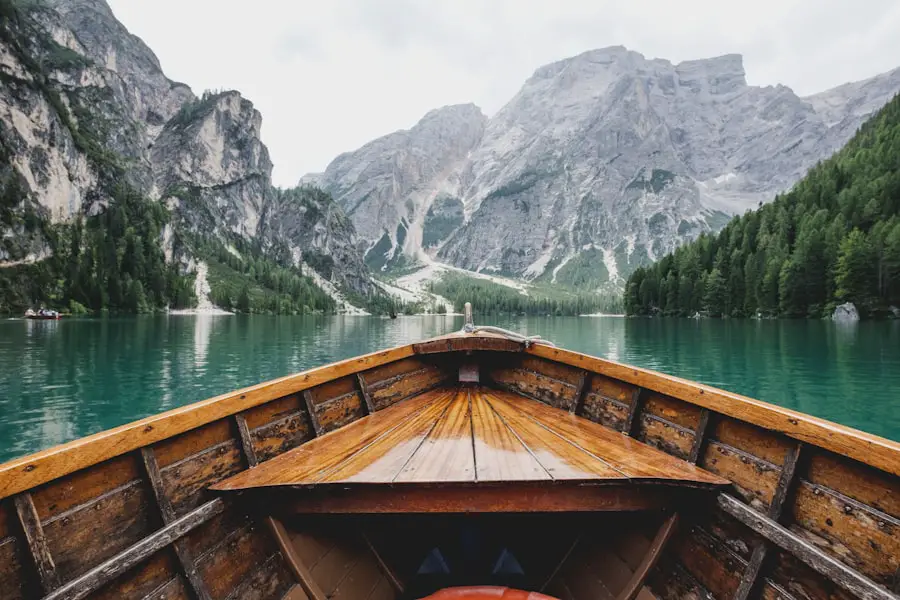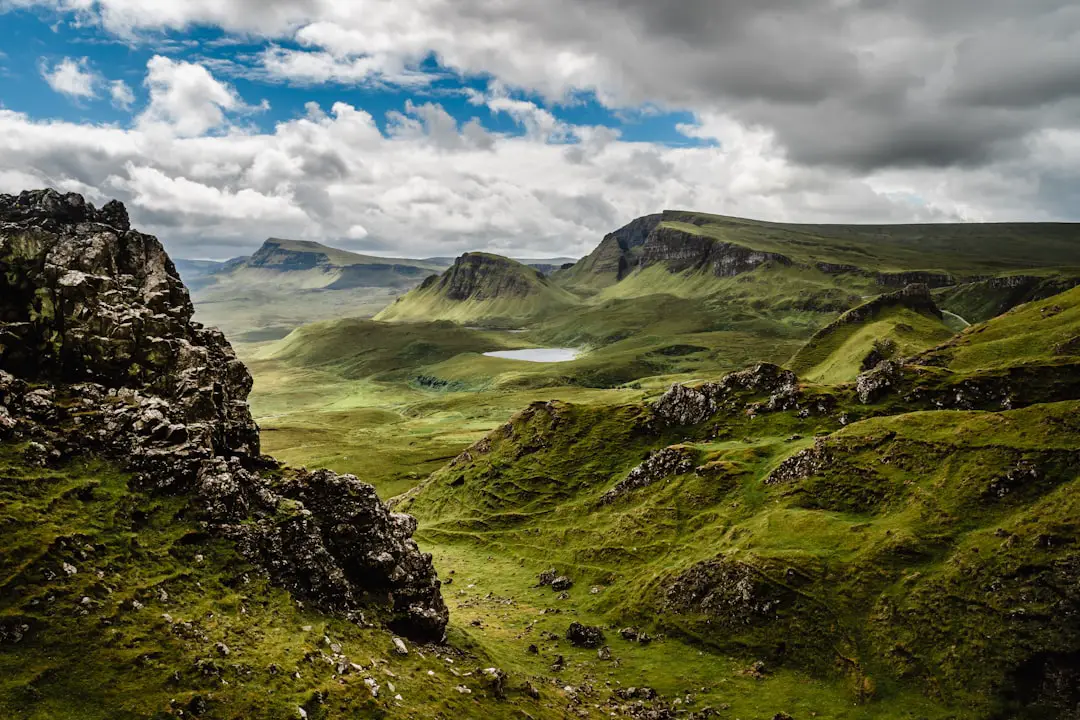Scotland, a land steeped in history and natural beauty, is renowned for its dramatic landscapes and rich cultural heritage. The country experiences a diverse range of seasons, each offering unique experiences and breathtaking scenery. From the vibrant blooms of spring to the serene snowscapes of winter, Scotland’s seasons shape not only the environment but also the activities and traditions that define Scottish life.
The interplay of weather patterns, geographical diversity, and cultural events creates a dynamic tapestry that attracts visitors year-round. Understanding the nuances of each season can enhance the travel experience, allowing visitors to immerse themselves in the local culture and natural beauty. The seasonal changes in Scotland are marked by distinct characteristics that reflect the country’s geographical diversity.
The Highlands, with their rugged mountains and deep lochs, contrast sharply with the rolling hills and coastal landscapes of the Lowlands. This geographical variety means that each season can manifest differently across the country, offering a plethora of experiences for those willing to explore. Whether it’s the vibrant colors of autumn leaves or the ethereal glow of the Northern Lights in winter, Scotland’s seasons provide a captivating backdrop for adventure and discovery.
Key Takeaways
- Scotland experiences four distinct seasons: spring, summer, autumn, and winter, each with its own unique charm and activities.
- Spring in Scotland brings a sense of renewal with blooming flowers, longer days, and the opportunity to witness nature coming back to life.
- Summer in Scotland offers long daylight hours, vibrant festivals, and the chance to explore the country’s stunning landscapes and historic sites.
- Autumn in Scotland is a visual treat with a tapestry of colors as the leaves change, making it an ideal time for scenic drives and outdoor adventures.
- Winter in Scotland transforms the country into a magical wonderland with snowy landscapes, cozy fireside gatherings, and the chance to experience traditional holiday celebrations.
Spring in Scotland: A Time of Renewal
As winter recedes, Scotland awakens to the gentle embrace of spring, a season characterized by renewal and growth. From March to May, the landscape transforms as flowers bloom and wildlife emerges from hibernation. The iconic daffodils and bluebells begin to carpet the countryside, creating a stunning visual display that signals the arrival of warmer days.
The air is filled with the sweet scent of blossoms, and the sound of birdsong becomes more pronounced as migratory birds return to their summer homes. This vibrant transformation is not just a feast for the eyes; it also invigorates the spirit, inviting both locals and visitors to venture outdoors. Spring is also a time for traditional Scottish festivals that celebrate the season’s arrival.
One notable event is the Beltane Fire Festival, held on April 30th in Edinburgh. This ancient Celtic festival marks the beginning of summer and is celebrated with bonfires, music, and dance. Participants don elaborate costumes and engage in rituals that honor fertility and growth, creating a lively atmosphere that draws crowds from all over.
Additionally, spring is an excellent time for hiking in Scotland’s national parks, such as Loch Lomond and The Trossachs, where trails are less crowded, and the scenery is particularly breathtaking as nature bursts into life.
Summer in Scotland: Long Days and Festivals

Summer in Scotland, spanning from June to August, is marked by long daylight hours and a vibrant array of festivals that celebrate Scottish culture. The phenomenon of the “midnight sun” allows for extended evenings filled with outdoor activities and social gatherings. The sun sets late in the evening, providing ample time for exploration and enjoyment of Scotland’s stunning landscapes.
Coastal areas like the Isle of Skye and the Hebrides become popular destinations during this season, as visitors flock to experience the breathtaking views and partake in water sports. The summer months are also synonymous with a plethora of festivals that showcase Scotland’s rich cultural heritage. The Edinburgh Festival Fringe, held every August, is one of the largest arts festivals in the world, featuring thousands of performances across various genres including theater, comedy, music, and dance.
This festival transforms the city into a vibrant hub of creativity, attracting artists and audiences from around the globe. Additionally, Highland Games take place throughout the summer, celebrating traditional Scottish sports such as caber tossing and tug-of-war. These events not only highlight Scotland’s athletic prowess but also foster a sense of community and pride among participants and spectators alike.
Autumn in Scotland: A Tapestry of Colors
| Month | Temperature (°C) | Rainfall (mm) |
|---|---|---|
| September | 12 | 80 |
| October | 9 | 100 |
| November | 6 | 120 |
As summer fades into autumn from September to November, Scotland dons a breathtaking cloak of colors that captivates all who witness it. The landscape transforms into a vibrant tapestry of reds, oranges, and yellows as deciduous trees shed their leaves in preparation for winter. This seasonal change creates picturesque scenes across the countryside, particularly in areas like Glencoe and Cairngorms National Park, where visitors can enjoy scenic drives or leisurely hikes amidst stunning fall foliage.
Autumn is also a time for harvest festivals that celebrate Scotland’s agricultural bounty. The Highland Show, held in June but often associated with autumn harvests, showcases livestock, crafts, and local produce. Farmers’ markets spring up across towns and cities, offering fresh produce such as apples, berries, and root vegetables.
This season is ideal for food enthusiasts looking to indulge in traditional Scottish dishes made from seasonal ingredients. Moreover, autumn brings with it a sense of nostalgia as communities prepare for Halloween celebrations rooted in ancient Celtic traditions. Samhain marks the end of the harvest season and is celebrated with bonfires and feasting, connecting modern festivities with their historical origins.
Winter in Scotland: A Magical Wonderland
Winter in Scotland, spanning from December to February, transforms the landscape into a magical wonderland characterized by snow-capped mountains and frosty glens. The chill in the air brings a sense of tranquility as nature settles into its winter slumber. While temperatures can drop significantly, particularly in the Highlands, this season offers unique opportunities for adventure seekers and those looking to experience Scotland’s enchanting winter charm.
Skiing enthusiasts flock to resorts such as Aviemore and Glenshee during winter months when snow blankets the slopes. These areas provide excellent facilities for skiing and snowboarding while also offering stunning views of the surrounding landscapes. For those who prefer a more leisurely pace, winter walks through national parks reveal serene vistas where frozen waterfalls glisten under sunlight.
Additionally, Christmas markets pop up in cities like Edinburgh and Glasgow, where visitors can enjoy festive treats such as mulled wine and traditional Scottish shortbread while shopping for unique gifts crafted by local artisans.
Best Activities for Each Season

Each season in Scotland presents its own set of activities that cater to diverse interests. In spring, nature lovers can partake in wildflower walks or visit botanical gardens such as the Royal Botanic Garden Edinburgh to witness blooming flora firsthand. Birdwatching becomes particularly rewarding as migratory species return to nest during this time.
For those interested in cultural experiences, attending local spring fairs or participating in community events can provide insight into Scottish traditions. Summer offers an abundance of outdoor activities ranging from hiking in national parks to exploring coastal paths along the rugged coastline. Water sports such as kayaking or sailing are popular along Scotland’s many lochs and islands during this season when temperatures are milder.
Festivals abound during summer months; visitors can immerse themselves in music festivals or partake in traditional Highland Games that celebrate Scottish heritage through athletic competitions. Autumn invites travelers to enjoy scenic drives through areas renowned for their fall foliage while indulging in seasonal culinary delights at farmers’ markets or local restaurants featuring dishes made from freshly harvested ingredients. Hiking trails become less crowded during this time, allowing for peaceful exploration amidst nature’s colorful display.
Winter activities include skiing at various resorts or enjoying cozy evenings by a fire at traditional inns while savoring hearty Scottish fare.
Tips for Traveling in Each Season
Traveling to Scotland requires some preparation tailored to each season’s unique characteristics. In spring, layering clothing is essential due to fluctuating temperatures; mornings can be chilly while afternoons may warm up significantly. Waterproof jackets are advisable as spring showers are common.
Planning visits around local festivals can enhance the experience by providing opportunities to engage with Scottish culture. During summer months, travelers should take advantage of long daylight hours by planning outdoor activities early in the day or late into the evening. Booking accommodations well in advance is recommended due to increased tourist traffic during peak season.
Staying hydrated and wearing sunscreen is crucial when spending extended periods outdoors under the sun. In autumn, visitors should prepare for cooler temperatures by packing warm clothing suitable for hiking or outdoor exploration. It’s wise to check local harvest festival schedules to experience seasonal celebrations firsthand.
Winter travelers should be equipped with warm layers suitable for cold weather conditions; sturdy footwear is essential for navigating snowy or icy terrain. Additionally, checking weather forecasts before embarking on outdoor adventures can help ensure safety during winter excursions.
Choosing the Best Time to Visit Scotland
Scotland’s seasons each offer distinct experiences that cater to various interests and preferences. Whether one seeks vibrant blooms in spring, lively festivals in summer, breathtaking fall colors, or serene winter landscapes, there is no shortage of beauty and adventure throughout the year. Understanding what each season has to offer allows travelers to tailor their itineraries accordingly while immersing themselves fully in Scotland’s rich cultural tapestry.
Ultimately, choosing the best time to visit Scotland depends on personal interests—be it outdoor activities or cultural experiences—and how one wishes to engage with this enchanting land throughout its ever-changing seasons.
FAQs
What is the best time to travel to Scotland?
The best time to travel to Scotland is during the summer months, from June to August, when the weather is relatively mild and the days are long.
What is the weather like in Scotland during the summer?
During the summer, Scotland experiences average temperatures ranging from 55°F to 65°F (13°C to 18°C), with longer daylight hours and less rainfall compared to other seasons.
Are there any specific events or festivals to consider when planning a trip to Scotland?
Yes, Scotland hosts various events and festivals throughout the year, including the Edinburgh Festival Fringe in August, the Royal Edinburgh Military Tattoo, and the Highland Games, which are popular attractions for tourists.
What are the pros and cons of traveling to Scotland during the summer?
The pros of traveling to Scotland during the summer include milder weather, longer daylight hours, and the opportunity to attend various events and festivals. However, the cons may include larger crowds and higher accommodation prices due to the peak tourist season.
Is it possible to travel to Scotland during other times of the year?
Yes, it is possible to travel to Scotland during other times of the year. However, it is important to be prepared for colder and wetter weather, especially during the winter months. Additionally, some attractions and accommodations may have limited availability during the off-peak season.
